At What Temperature Do Solar Panels Stop Working (Guide)
By: HomeOtter Team
Mar 29th 2023
Time: 9min
Living in a place where it gets cracking hot in the summer can significantly impact the efficiency of your solar panels and can cause them to overheat. But that does not mean solar panels are easygoing at low temperatures. Expect your solar plates to become less efficient because of reduced light absorption in the frigid weather. This leads us to the question - at what temperature do solar panels stop working?
To know how much temperature is too much when it comes to the efficient working of solar plates, you need to start from scratch. Our article today is your complete guide on how solar panels work and the factors that affect their performance. And most importantly, we’ll also discuss how temperature changes can directly or indirectly bring about certain outcomes.
By the time you are done reading this 10-minute guide, you will know the key pointers to keep your solar panels at the perfect temperature to get the maximum out of your asset.
At What Temperature Do Solar Panels Stop Working?
The solar panels function optimally at 77°F. However, if the temperature exceeds 149°F, it will significantly affect their efficiency and they will eventually stop working.
How Solar Panels Work - A Quick Overview
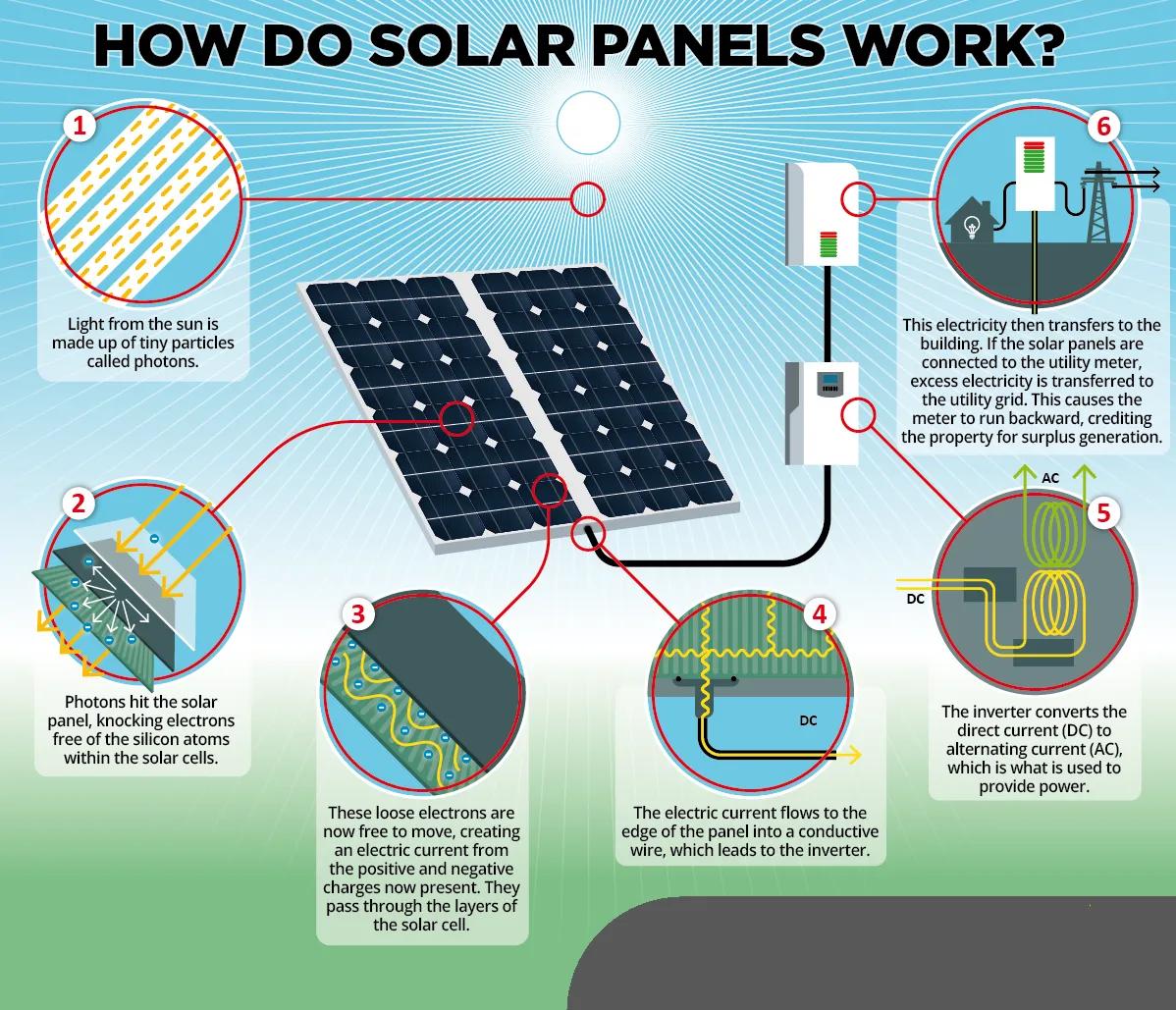
Before we get into the effects of temperature on solar panels, let's understand what they are. Solar panels are essentially energy-converting devices that take in sunlight and turn it into an electric current. It is all done using the photovoltaic effect. In this phenomenon, the energy from the sun is converted into a flow of electrons that is used as electrical power.
These little wonders are becoming increasingly popular as a sustainable and cost-effective alternative to traditional forms of energy generation. A solar panel system consists of several components. Let’s take a look at them.
- Solar Cells: They are composed of two silicon layers – one positively charged and the other negatively charged. These are designed to convert sunlight into usable electrical energy.
- Glass: A solar panel is covered with tempered glass that protects the solar cells from external damage.
- Backsheet: The backsheet is the bottom layer of the solar panel which provides electrical insulation and protects the solar cells from moisture.
- Frame: The frame provides structural support to the solar panel and protects it from external damage.
- Wiring: Wires connect the solar panels and inverters for the flow of electricity.
- Inverter: It converts the DC electricity generated by the solar panels into usable AC electricity.
- Mounting System: It holds the solar system in place and can be installed on the roof or ground.
Solar panels are made up of multiple solar cells which are connected in series and parallel. When sunlight hits the solar cells, it excites the electrons in the silicon atoms. The electrons break free from their atoms which eventually creates a flow of electricity.
But electricity generated this way can’t be used directly since it is in direct current (DC). That's where an inverter comes in. It converts the DC electricity into something called alternating current (AC) that's perfect for powering all our electrical appliances and devices.
Now that we know how solar panels work, let’s see how they are affected by temperature variations.
How Does Temperature Affect Solar Panels’ Performance?
The effect of temperature on the performance of solar panels is normally measured through the temperature coefficient. It plays a crucial role in determining how temperature fluctuations can impact a panel's power output.
The temperature coefficient of a solar panel is a measure of how much the panel's power output will decrease for every degree increase in temperature above a reference temperature. The reference temperature is usually 77°F which is considered the standard operating temperature for solar panels. The solar panel coefficients range between -0.4% to -0.5% per degree Celsius.
For example, let's say a solar panel has a temperature coefficient of -0.5%/°F. This means that for every degree Fahrenheit increase in temperature above the reference temperature of 77°F, the panel's power output will decrease by 0.5%. So if the temperature increases to 100°F, the hot solar panels’ power output will decrease by 11.5%.
Contrarily, if the temperature drops below the reference temperature, the panel's power output will increase. However, this increase is typically smaller than the decrease in power output at higher temperatures.
What Is The Optimal Temperature For Solar Panels?
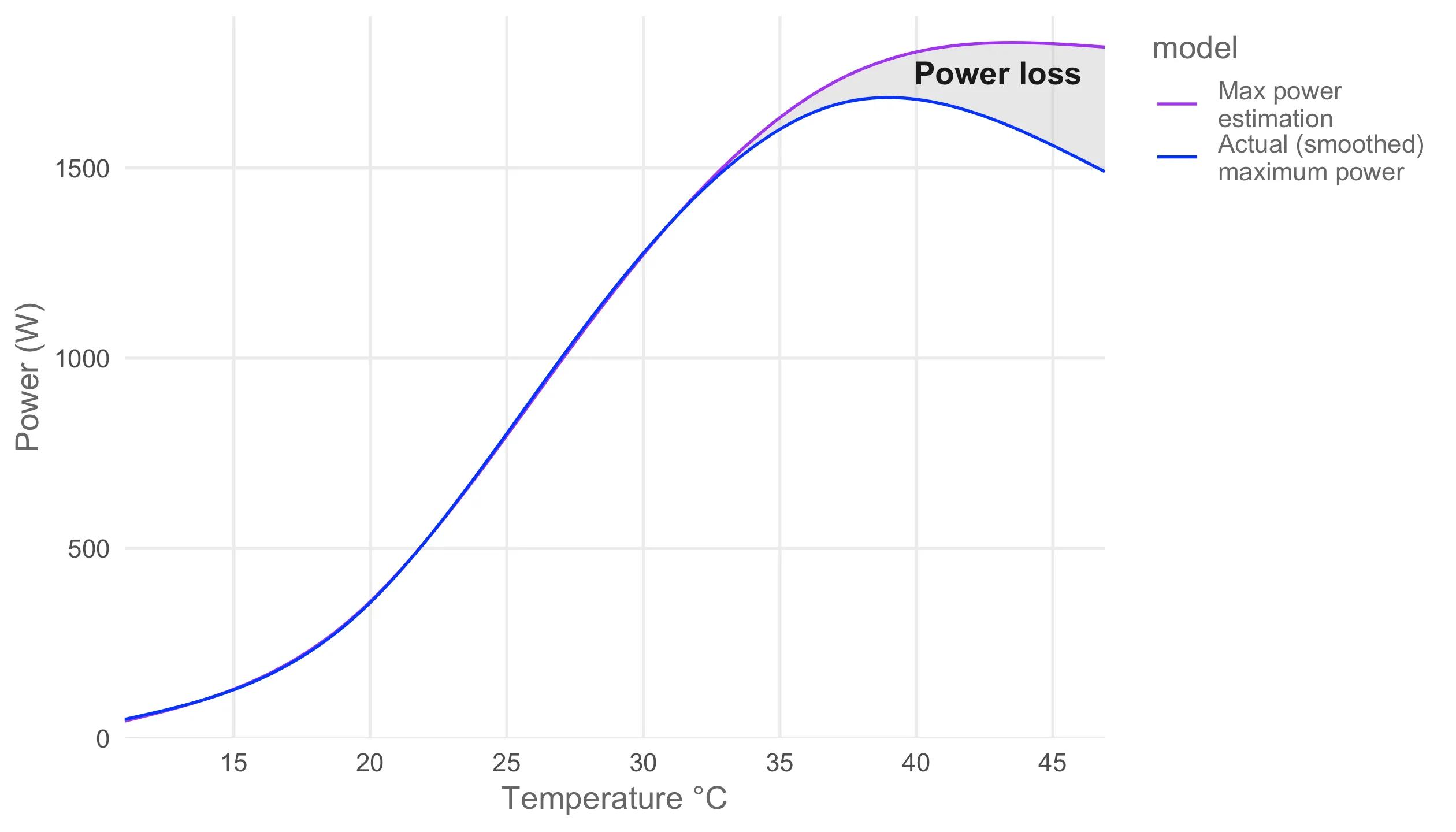
The optimum operating temperature for solar panels ranges between 59°F and 95°F. When the temperature rises above this range, the solar panel's power output will decrease because of the temperature coefficient we discussed earlier. However, if the temperature drops too low, the panel's performance can also be negatively affected.
How Hot Do Solar Panels Get & How Does It Affect Them?
When the air temperature rises above the optimum temperature range, solar panel performance begins to decline as it reduces the panel's voltage which eventually decreases the power output. High temperatures also cause cracks and damage to the panel's surface.
In extreme cases, solar panels become so hot that they stop working altogether. Most panels have a maximum operating temperature of around 65°C, beyond that, their performance will significantly decrease. Proper cooling systems in such cases are required to prevent damage and ensure maximum output.
How Do Low Temperatures Affect Solar Panels?
Low temperatures also impact solar panel performance a great deal. As the temperature drops below the optimum range, the resistance of the panel's materials increases which causes a decrease in the panel's power output.
In extreme cases, such as during cold winter months or in regions with freezing temperatures, solar panels can become damaged. Water that may have accumulated on the surface of the panel can freeze and expand, causing cracks or even shattered panels.
Now that we know how the temperature affects solar panels, let’s discuss some other factors that can have an impact on the output.
5 Other Factors That Affect Solar Panel Efficiency
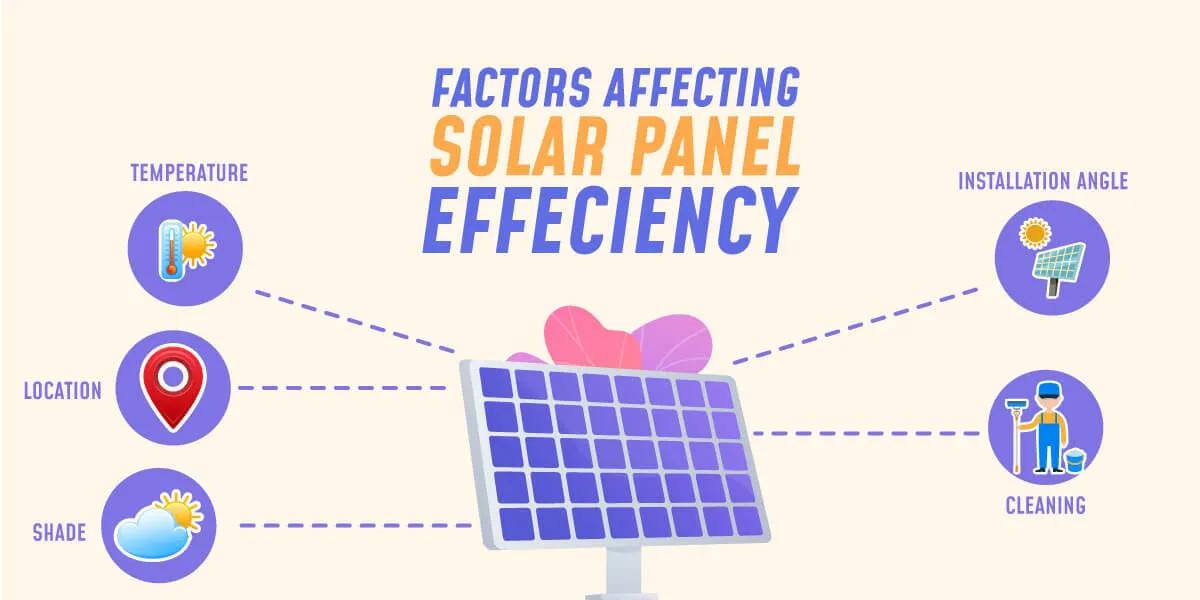
Temperature isn’t the only thing that affects solar panel output. Let’s take a look at some other factors.
1. Sunlight Intensity
The intensity of sunlight with which it hits the surface is the real game-changing factor. A solar panel's energy generation capacity depends on it. So the more intense the sunlight, the more energy a solar panel can produce. So install the solar panels where it receives maximum sunlight.
2. Angle Of Incidence
So you probably first learned about the angle of incidence in school. Yes, it’s the same angle at which the sun's rays strike the solar panel. If the sun's rays hit the solar panel at a perfect 90 degrees (they are perpendicular to the surface of the panel), this is what we would call an ideal scenario.
But when the sun's rays strike the panel at an angle, they tend to bounce off the surface and squander the energy the panel generates. Therefore, install the solar panel at an optimal angle to maximize its efficiency.
3. Shading
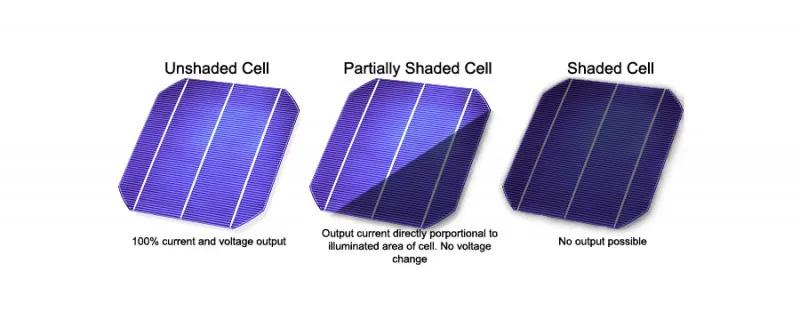
Shading is another factor that can significantly affect the efficiency of solar panels. So when a solar panel is shaded, it curbs down the sunlight it receives and causes a drop in power output. Shade is the death of solar panels. Yes, consider it as that crucial.
Even the smallest amount of shading, such as from a nearby tree or building, can have a significant downsize on solar panels’ performance. Hence, if you want to save on those kilowatts, make certain that the solar panels are installed where it receives maximum sunlight and is free from any obstructions.
4. Soiling
Soiling is that sunblock that won't let you have that perfect tan on the beach. In non-twisted words, soiling is the accumulation of dust, dirt, and other debris on the surface of the solar panel.
Soiling can significantly reduce the efficiency of the solar panel because it bars the amount of sunlight that reaches the solar batteries. A dirty solar panel can generate up to 20% less electricity than a clean panel. Therefore, keep solar panels clean for the best results.
5. Module Quality
The quality of the solar panel modules is also an indispensable factor that affects their efficiency. Remember the saying, if you pay peanuts, you get monkeys. That applies here too. Premium-quality solar panels will have better results in terms of higher power output and efficiency than low-quality panels.
The solar panel manufacturers, the technology, and the raw material used will decide the fate of the quality of a solar panel. Needless to say, if you are looking at the maximum efficiency and longevity of a solar panel, invest in the best.
Now that we know the different elements that impact the performance of solar panels, let’s look at the ways for enhancing their output.
5 Proven Strategies For Improving Solar Panel Efficiency
Here are 5 proven strategies for improving solar panel efficiency:
A. Module Design

The module design is an important factor in solar panel efficiency. It affects how much sunlight is captured and how efficiently it is converted into electricity. The two main types of module designs are monocrystalline and polycrystalline. So it's monocrystalline vs. polycrystalline war. But the clear winner here is monocrystalline (made from a single crystal of silicon) solar panels which are more efficient than polycrystalline solar panels.
Another important factor in module design is the size and number of cells. Larger cells generally generate electricity more but they can also be more expensive. More cells can also increase efficiency but they can also increase the cost of solar panels. A balance must be struck between cost and efficiency when designing a solar panel.
B. Cooling Methods
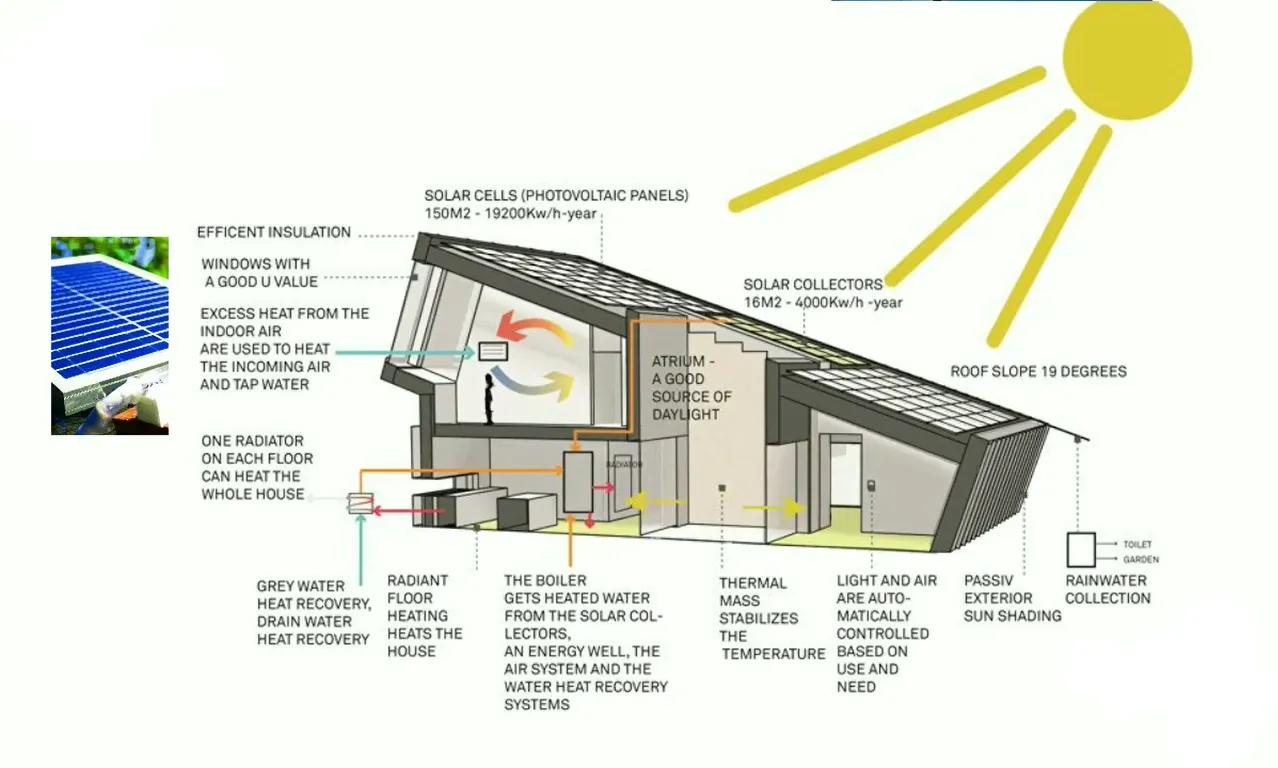
Cooling methods can also improve solar panel efficiency. One way to cool solar panels is by using passive cooling techniques which involve using natural heat transfer mechanisms such as convection, radiation, and conduction. This method can be achieved by designing the solar panel with a special coating that reflects sunlight and absorbs heat.
Another way is to install the solar panel with a gap between the panel and its supporting structure. This gap allows air to circulate around the panel, removing the excess heat from its surface.
Active cooling is another way to cool solar panels which involves using a cooling system that removes heat from the panel actively. One active cooling method is water-based cooling in which the water is circulated through tubes that run beneath the panel's surface to absorb and transfer the heat away from the panel.
The second active cooling method is air-based cooling which involves using fans or blowers to move air across the surface of the panel, removing heat and cooling the panel.
C. Bypass Diodes
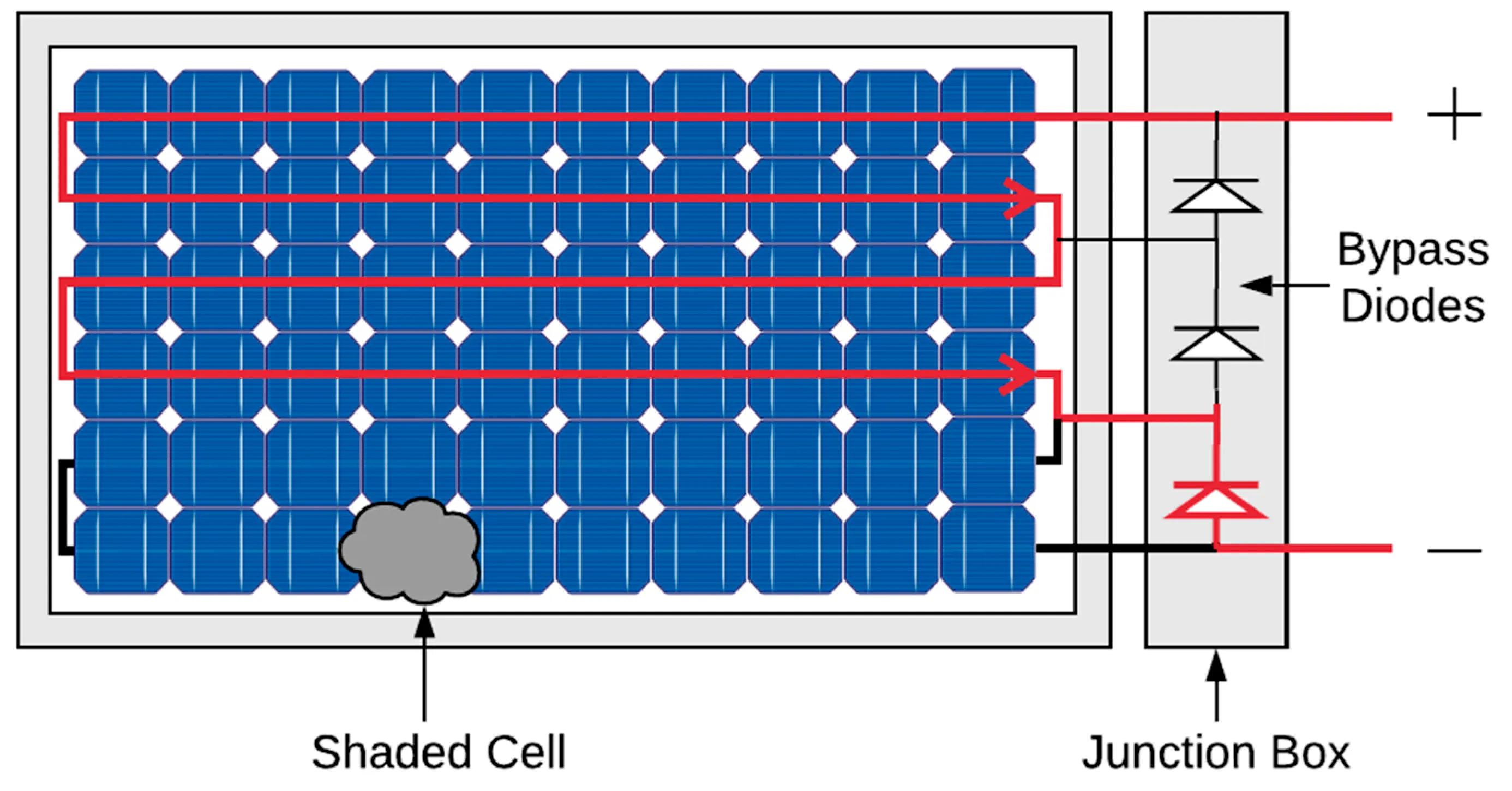
Bypass diodes are another strategy for improving solar panel efficiency. Bypass diodes are used to reduce the effect of shading on the solar panel. When a solar panel is shaded, it produces less electricity. Bypass diodes can be used to bypass the shaded cells and allow the unshaded cells to continue producing electricity.
Bypass diodes are usually installed in a solar panel in a series. This means that if one cell is shaded, the current can bypass that cell and continue to flow through the other cells in the panel. This reduces the effect of shading on the overall efficiency of the solar panel.
D. Tracking Systems

Tracking systems are the final strategy for improving solar panel efficiency. Tracking systems are used to follow the movement of the sun across the sky. The tracker positions the panel at an optimal angle to allow maximum sunlight to be captured throughout the day.
There are 2 main types of tracking systems:
- Single-axis tracking systems for moving the solar panel along 1 axis
- Dual-axis tracking systems for moving the solar panel along 2 axes
Dual-axis tracking systems may be more efficient than single-axis systems but their efficiency makes them totally worth it.
E. Work With A Reputable Company
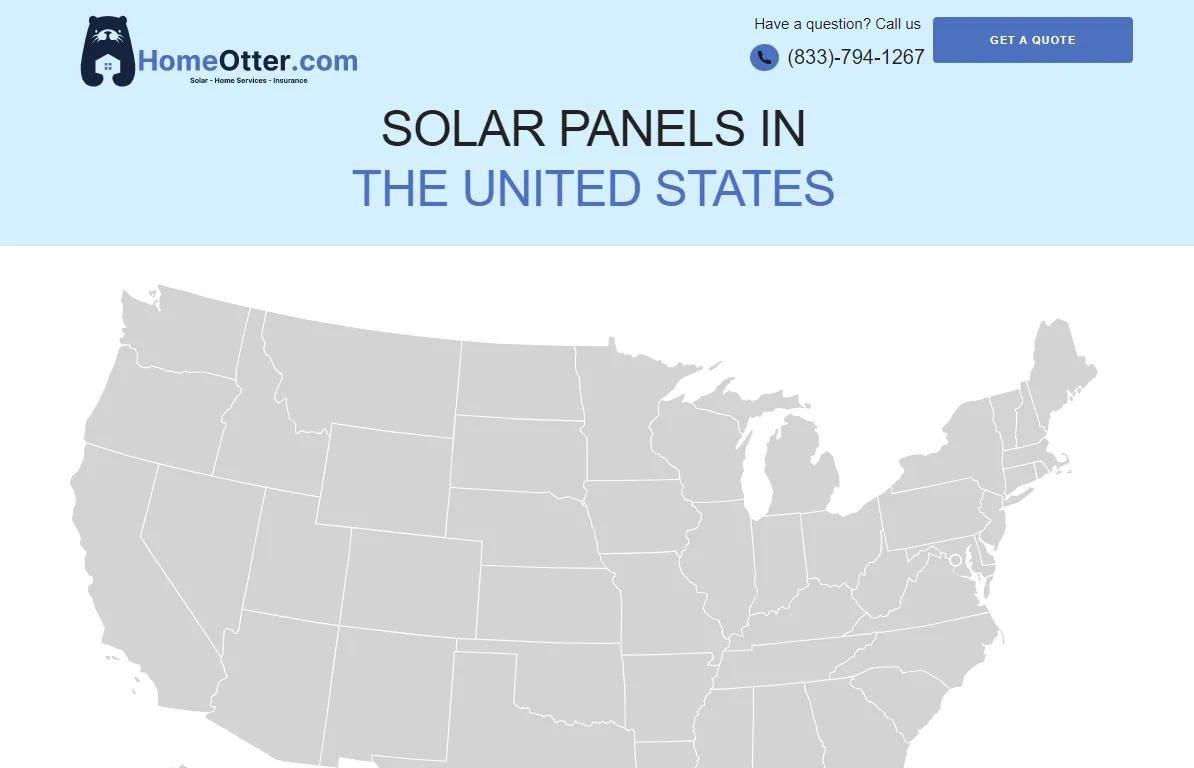
When it comes to selecting a reputable solar company, HomeOtter is one company that you can look up to. At HomeOtter, we connect homeowners with the best solar panel providers in the country. We only work with reputable companies that use the highest quality solar panels available on the market to ensure that your investment lasts for years to come.
Our solar panel providers are carefully selected and we partner with those who share our values of customer satisfaction, quality, and sustainability. We make sure that they have the expertise and experience to provide you with the customized solution that you are looking for.
What we want you to do: sit back and enjoy the benefits of your new solar panels
What we are supposed to do: connect you with the best solar panel company in the country.
We understand that every home is different and that’s the very reason we offer a customized solar report. We consider factors such as the size of your home, the angle and direction of your roof, and your energy consumption patterns and give you a recommended solar installation size for your specific roof.
Not sure whether to lease, buy with cash, or finance your solar panels? Our customized solar report also includes a cost-benefit analysis of each option. With our customized solar report, you can feel confident that you're making the right choice for your home and your wallet. By choosing HomeOtter, you're not just investing in solar panels, you're investing in a better future.
Now that we are familiar with the strategies to maximize output, let’s now discuss some ways to keep them in great condition.
4 Field-Tested Approaches To Keep Your Solar Panels In Top Condition
Let’s take a look at how you can increase the life of your solar panels.
I. Cleaning
Keeping your solar panels clean is vital for maintaining their efficiency. Dirt, dust, and debris can accumulate on the panels which will reduce the amount of sunlight that reaches them. This can result in lower energy output and affects your savings.
To clean your solar panels, use a soft cloth or a sponge with a mild soap solution. Be careful not to scratch the surface of the panels or use any abrasive cleaners. Rinse the panels with water and let them dry. Or better yet, hire professional cleaners to do the job for you as they know the best.
II. Regular Inspection
Regular inspection of your solar panels is essential to identify any issues early on. Check your panels regularly to ensure that they are not damaged, cracked, or broken. Look for any signs of wear and tear, such as:
- Corrosion
- Damaged cables
- Loose connections
If you notice any of these issues, address them promptly. You can also contact a professional solar panel maintenance company to inspect your solar panels regularly.
III. Repairs
If you find any issues during the inspection, have them repaired as soon as possible. Delaying repairs can lead to further damage and can lessen solar panel energy production. It can be as simple as replacing a damaged cable or a complex one like replacing a faulty inverter. Always hire a professional to carry out any repairs to avoid causing further damage.
IV. Replacement
Solar panels have a lifespan of around 25 years. After this time, they may start to degrade, resulting in reduced energy output. A solar panel that is over 20 years old needs to be replaced with newer ones.
Fresh panels are more efficient and replacing them can increase your energy output and save you money in the long run. Consult with a professional to determine whether replacement is necessary.
Conclusion
Solar panels are a sustainable and environmentally friendly source of energy but they can be affected by extreme temperatures. Solar panels are built to handle various temperatures, but they can only handle so much before their performance starts to suffer.
While the question of "at what temperature do solar panels stop working" remains relevant, it is clear that solar panels are a sustainable and reliable source of energy that will continue to grow in popularity and impact. By properly installing solar panels and maintaining them, they can last for years and remain to be a valuable investment in any area, including those with hot climates.
If you’re looking for something more stable and reliable, HomeOtter is the go-to platform. Customers prefer working with us above any other firm and we have always been a favorite of our clients. We provide a tailor-made solar report for your house which is based on the Google Sunroof Project to determine the recommended solar size for your home.
Take the first step towards a cleaner and more sustainable future with HomeOtter – your trusted partner for all your solar needs.
Contact us today to schedule your custom solar report and start enjoying the benefits of renewable energy.
